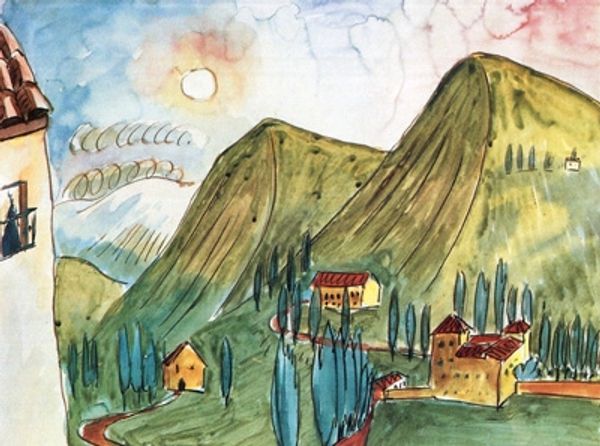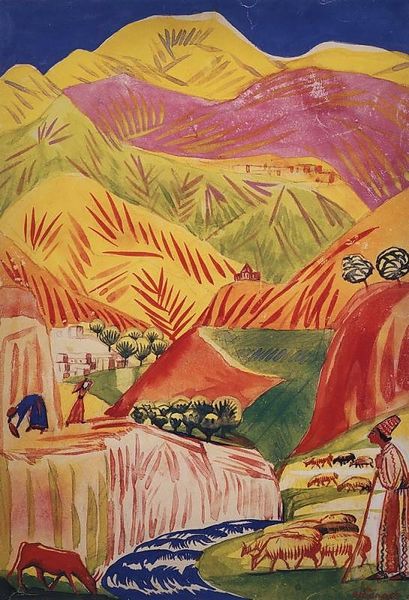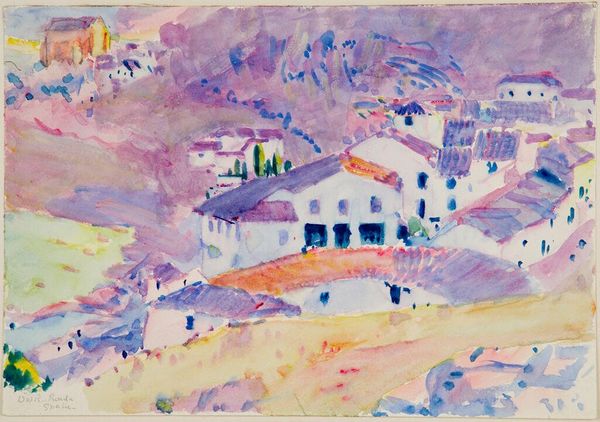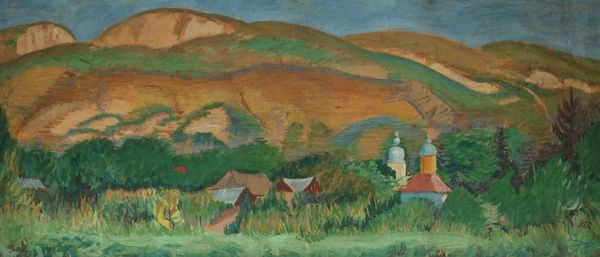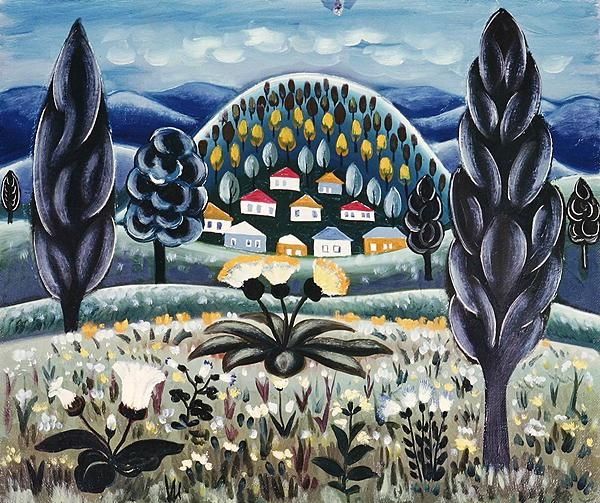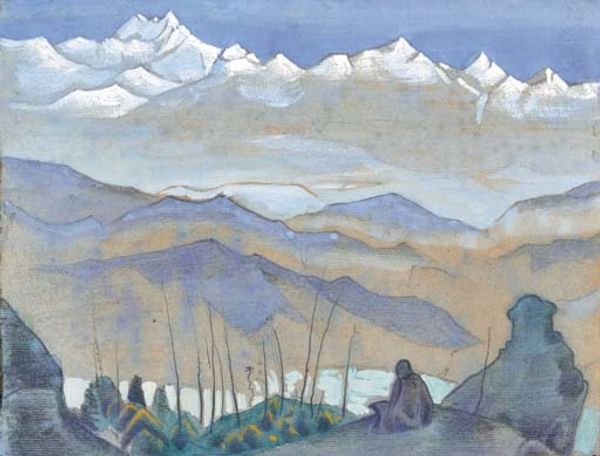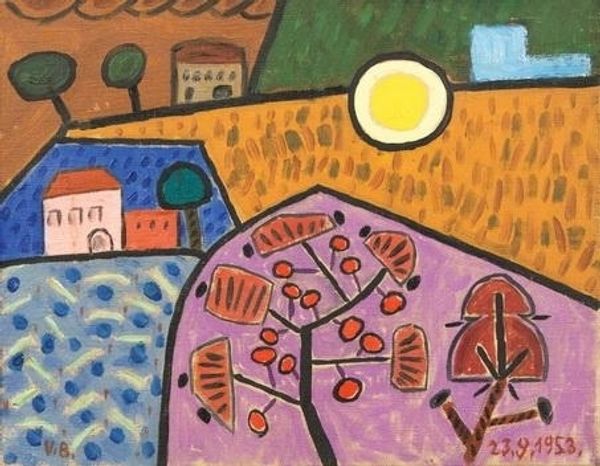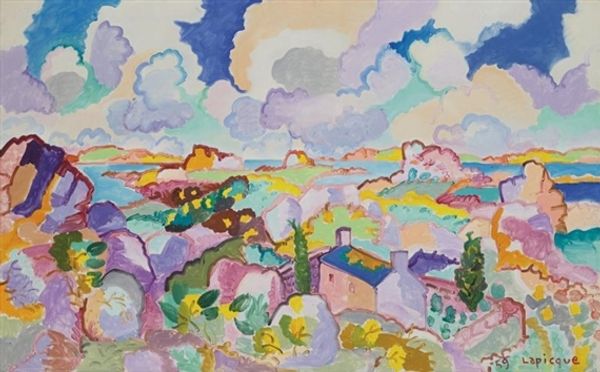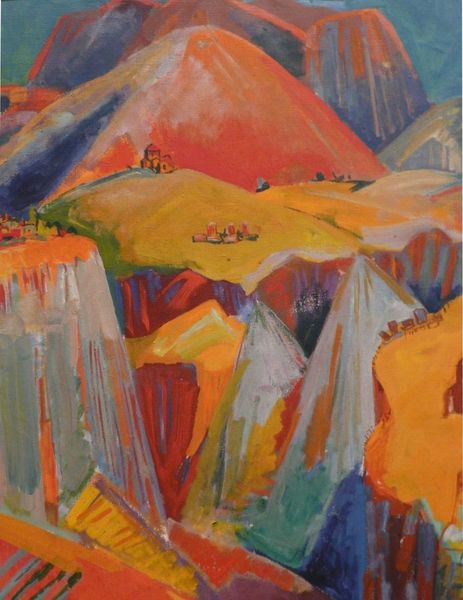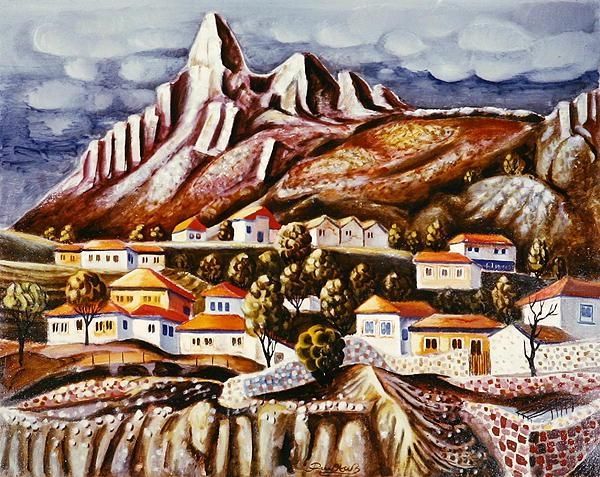
Copyright: Alberto da Veiga Guignard,Fair Use
Editor: This is Alberto da Veiga Guignard’s "Tarde De São João," painted in 1950 using oil on canvas. There’s a charming naivete to it, almost like folk art, depicting a landscape dotted with white buildings and what appear to be festive hot air balloons. What story do you think Guignard is trying to tell us here? Curator: This painting really speaks to the power of art in reflecting cultural identity. Guignard isn't just showing us a pretty landscape; he’s giving us a snapshot of a festival deeply embedded in Brazilian culture – the Festa de São João, a celebration with both indigenous and Catholic roots. See the crowds gathered at the bottom, the balloons in the sky; what could those elements suggest about Guignard’s view of Brazilian society? Editor: Maybe he’s showing a society straddling tradition and… well, is that the right word, “modernity”? The balloons seem so whimsical compared to the quite formal, traditional structures. Curator: Precisely! And consider the timing: 1950. Brazil was undergoing significant modernization, and Guignard, known for his landscapes capturing a specific emotional tone – saudade, perhaps – seems to be positioning this festival as a cultural anchor. A visual statement on the importance of holding onto traditions amidst sweeping changes. What role do you think the scattered churches play? Editor: They feel almost like markers, solidifying the cultural importance throughout the landscape, linking the community together. It’s interesting how Guignard uses this kind of naive style to ground quite a profound statement on cultural preservation and identity. Curator: Exactly, it makes us question what we perceive and how it is related to collective history. Thinking about it from this perspective reshapes our understanding of folk art's contribution. Editor: Definitely gives me a lot to consider regarding what shapes our view of art. Thanks for this discussion!
Comments
No comments
Be the first to comment and join the conversation on the ultimate creative platform.
